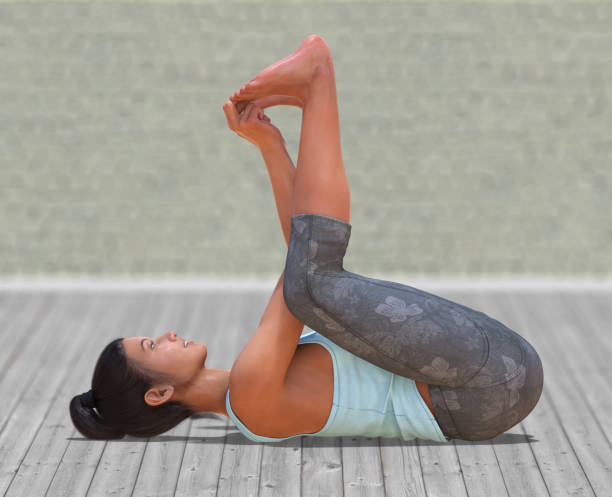Swimming is different than other activities because it is in water. This makes it necessary to be more strategic about how you breathe while swimming. You must swim with your face submerged in water for three out of four Olympic strokes. If you wish to improve your swimming stroke, it is important to learn how to increase your lung capacity.
This article will examine Olympic swimmers in order to gain insight into how good breath control looks. Next, we will examine the benefits that greater lung volume can bring. Finally, we will look at how to increase your lung capacity for swimming using specific swimming exercises.
Case Study on Lung Capacity
Let’s first do some research before we dive into the details of how to increase your lung capacity for swimming. You can find any video online that shows one of the 50-meter freestyle finals from the Olympics.
In addition to the incredible speed at which they swim, each swimmer only takes about 1-2 breaths per minute. Some swimmers may not even breathe for 50 meters. This is a sign of how vital having a good lung capacity for swimmers. We are not saying you should only take a deep breath every 50m, but this is something we can learn from.
Our lung capacity is simply how efficient our lungs are. This can be measured with a Spirometry Test. Regular exercise can improve your lung capacity over time. Smoking reduces your lung capacity.
Refrain from being misled into believing that having a high lung capacity means you can hold your breath longer. It would not apply to butterfly and freestyle swimmers. It would also not apply to breast or backstrokers who can breathe every stroke. There are many benefits to learning how to improve lung capacity for swimming.
The Benefits of Increasing Your Lung Capacities
Your competitive swimming performance can be improved by improving your lung health. Let’s look at some of the benefits of increasing your lung capacity.
IMPROVED LUNG FUNCTION
As we have said, a better lung capacity equals better lung function. The basis of all chemical reactions in the body to produce the energy we need to move (and live) are oxygen and glucose. This capacity can be trained to increase your oxygen availability and improve your anaerobic energy function.
This means that a larger lung capacity will improve your cardiovascular ability across all strokes. For better swimming performance, efficient breathing will ensure that your muscles are supplied with oxygenated blood.
BETTER BUOYANCY
Noting that oxygen in your lungs can help you float is also important. Swimming is an enjoyable sport that helps swimmers feel confident.
Competitive swimmers know that a higher lung capacity can improve their body position in water. Hydrodynamics can be improved by having a slightly higher floating position.
INCREASED OXYGEN TO BRAIN
We mentioned that a larger lung capacity is a sign of more oxygen being circulated around the body. This would lead to improved oxygenation of the muscles, which swimmers should focus on.
This provides oxygen to the brain, which can help improve concentration and focus. This is an advantage for swimmers as it can help prevent sloppy strokes or poor times from swimmers who have a wandering mind due to their relentless cardio. Having more oxygen can improve your focus and help you stay focused throughout your race.
Specialized Workouts To Increase Your Swimming Ability
Let’s now learn how to increase your lung capacity for swimming. These breathing exercises and techniques don’t require any equipment and are easy to do if you’re healthy and free from injuries. Start right away.
CONTROLLED BREATHING
Warming your respiratory muscles without ever having to go in the pool is easy. This exercise can be done at home and is a great way to relax.
Slowly inhale as deep as possible and hold the breath for five seconds. Next, take five seconds to exhale as deeply as you can. Then wait five seconds and repeat the exercise. Ten deep, exhale out.
BREATHING IN TIMES WITH YOUR ARM STROKE
Let’s return to the pool for this exercise. Swim freestyle and alternate your breathing every two, three, five, six, seven, eight or nine strokes. This is a great exercise to do during your warm up phase or during strenuous swimming training.
BREATHING A SET NUMBER OF TIMES OVER A CERTAIN DISTANCE
This form hypoxic exercise forces your body to use more carbon dioxide and less oxygen.
Limit the number of breaths you take for each lap. Start by swimming for free 300-400 meters. Gradually increase your intensity.
PURSED LOOP BREATHING
This is another breathing exercise that you can do at home while doing chores or watching TV. This will allow you to slow down and improve your breath control.
Inhale slowly through the nose and exhale through the lips. The exhale should take twice as long as your inhale. You can repeat this exercise as many times you wish. You can think of your pursed lips more as a daily habit and not a breathing exercise.
SWIM HAIR SNORKEL TRAINING
You can swim any style of face-down stroke, but you must wear a snorkel for your lengths. To make this hypoxic exercise work, you must use a snorkel with a limiter that makes breathing harder (similar to an altitude mask). The Swimming Snorkel Pro III is the perfect choice.
Breathe better today
It’s not only a good idea to increase your lung capacity for competitive swimming. But it’s also a great way to improve your overall health and well-being. Take our advice and look at the Olympian swimmers for an example of proper breathing.
There are many benefits to learning how to improve lung capacity for swimming. You’ll have a better lung function, float better, and get a sharper focus in the water. Try our breathing exercises if you are ready to plunge into the pool.
You can find swim training snorkels, tons of other tools, and high-quality swimwear at arena’s online shop if you are serious about improving your lung function and getting better results in the pool.




